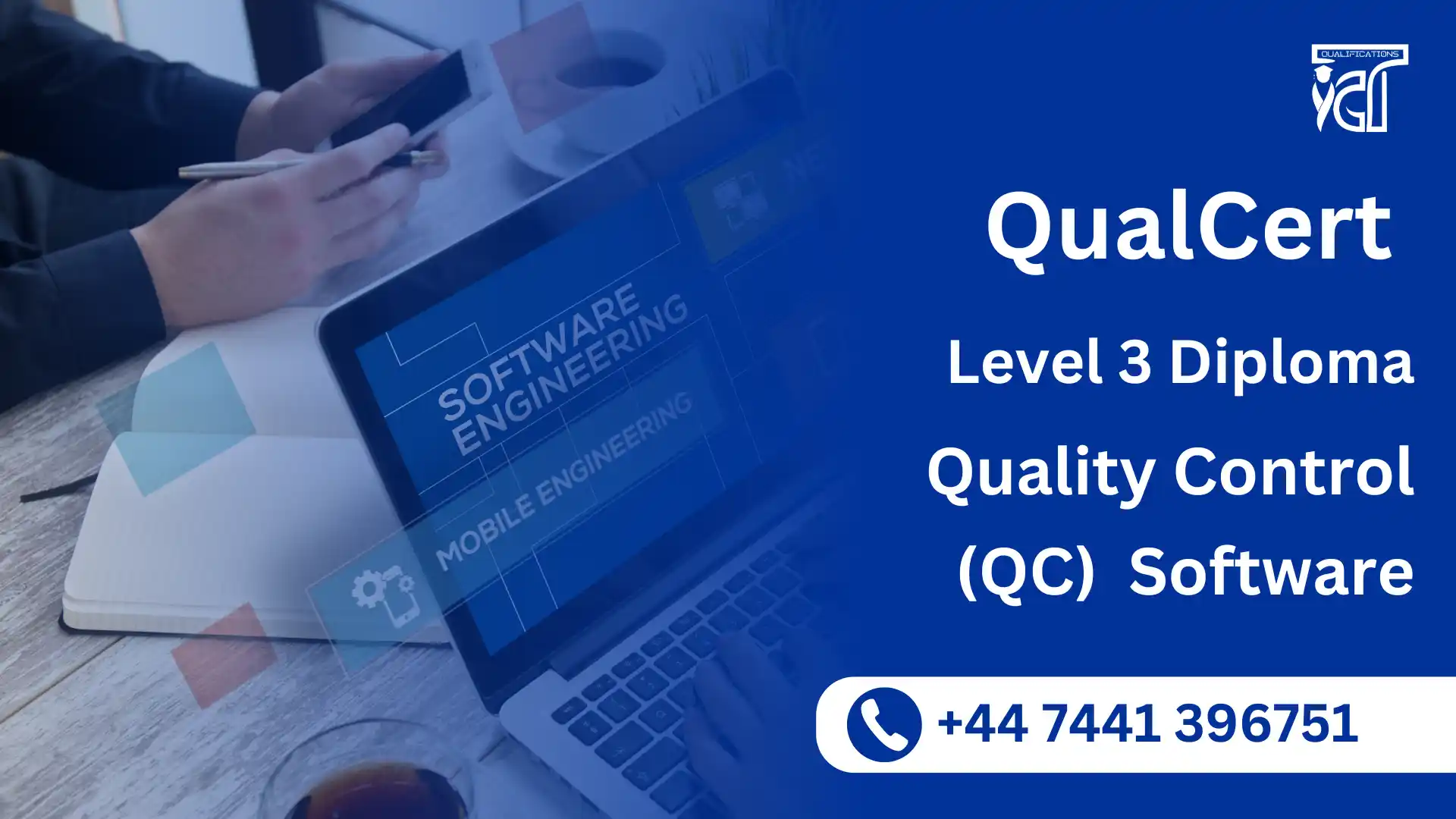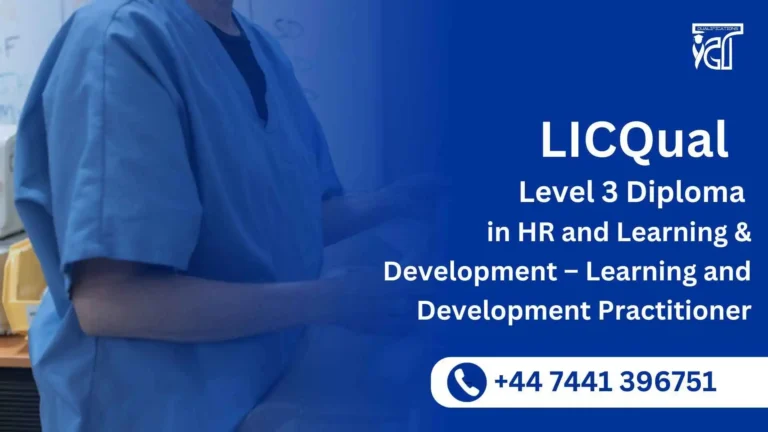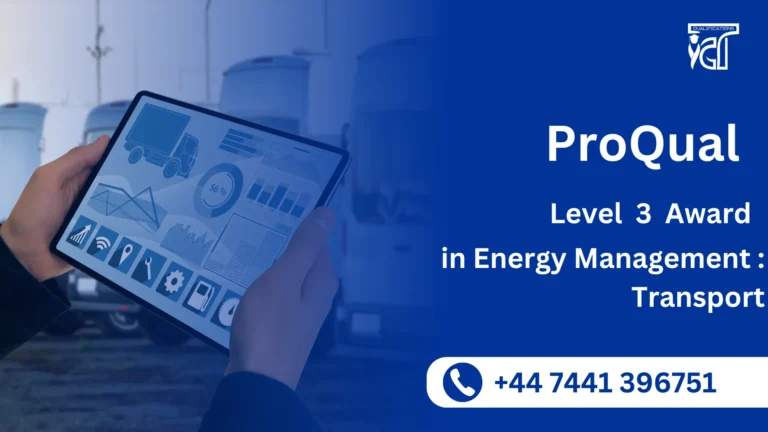The QualCert Level 3 Diploma in Quality Control (QC) Software is designed to provide learners with a strong foundational understanding of software quality assurance practices and principles. As the demand for reliable and defect-free software continues to rise, quality control professionals play a critical role in ensuring that software products meet performance, security, and usability standards.
This course introduces learners to the essential tools, techniques, and processes used in software quality control. From understanding software testing fundamentals to learning about industry standards, compliance, and documentation, participants will gain practical skills that are directly applicable in modern development environments.
Whether you’re aspiring to enter the IT industry or looking to enhance your current capabilities in software testing and quality assurance, this qualification equips you with the core knowledge required to contribute effectively to quality-driven software projects.
QualCert Level 3 Diploma in Quality Control (QC) Software
The QualCert Level 3 Diploma in Quality Control (QC) Software comprises several study units designed to provide learners with a comprehensive understanding of QC principles and practices in the software sector. Below is the qualification structure, including the Total Qualification Time (TQT) 300, Guided Learning Hours (GLH) 210, and 60 Credits associated with the program.
| Unit Ref# | Unit Title | Credit | GLH | TQT |
| QC11010 – 1 | Advanced QC Software Features | 10 | 35 | 50 |
| QC11010 – 2 | Quality Performance Indicators and KPIs | 10 | 35 | 50 |
| QC11010 – 3 | Root Cause Analysis Using QC Software | 10 | 35 | 50 |
| QC11010 – 4 | Integration of QC Software with ERP Systems | 10 | 35 | 50 |
| QC11010 – 5 | Global QC Standards and Compliance | 10 | 35 | 50 |
| QC11010 – 6 | Continuous Improvement through QC Analysis | 10 | 35 | 50 |
GLH (Guided Learning Hours) and TQT (Total Qualification Time) are terms commonly used in vocational qualifications to help define the amount of time a learner is expected to spend on their studies.
1. GLH (Guided Learning Hours)
GLH refers to the number of hours a learner spends being directly taught, supervised, or supported during their course. This includes the time spent in activities such as:
- Classroom instruction
- Practical workshops
- One-on-one tutoring or mentoring sessions
- Online learning sessions with tutor support
In other words, GLH represents the time that learners are actively engaged with their instructors or learning activities.
2. TQT (Total Qualification Time)
TQT represents the total amount of time a learner is expected to invest in completing a qualification, including:
- GLH (Guided Learning Hours): Time spent on direct learning, as explained above.
- Self-Directed Learning: This includes time spent on independent study, research, assignment completion, preparation for exams, and any other work the learner does outside of direct teaching hours.
TQT is a broader measure that includes all the time required to achieve the qualification. It helps learners and employers understand the overall commitment required for the qualification.
Key Differences Between GLH and TQT:
- GLH focuses on direct learning with guidance or supervision.
- TQT includes GLH as well as independent study time and other learning-related activities.
Example:
If a qualification has a TQT of 600 hours and a GLH of 250 hours, it means the learner should spend 250 hours in direct learning (classroom, online, or tutor-led sessions) and 350 hours on independent study or research.
Advanced QC Software Features
- Analyze and utilize advanced features of quality control software for enhanced performance.
- Configure and customize QC software settings to meet specific industry requirements.
- Implement automated quality control processes for improved efficiency and accuracy.
- Leverage data analytics and reporting tools to monitor software quality trends.
Quality Performance Indicators and KPIs
- Identify key quality performance indicators (KPIs) relevant to software quality control.
- Develop and apply metrics for measuring software reliability, functionality, and usability.
- Interpret KPI data to assess and improve software testing and quality assurance processes.
- Utilize dashboards and reporting tools to track and communicate performance insights.
Root Cause Analysis Using QC Software
- Apply structured methodologies for identifying the root causes of software defects.
- Utilize QC software tools to perform data-driven root cause analysis.
- Develop corrective and preventive actions to address quality issues.
- Monitor the effectiveness of implemented solutions through quality tracking systems.
Integration of QC Software with ERP Systems
- Understand the role of ERP systems in enterprise-wide quality management.
- Configure QC software to integrate with ERP platforms for seamless data exchange.
- Implement automated workflows that connect QC and ERP functionalities.
- Analyze the impact of integrated systems on operational efficiency and compliance.
Global QC Standards and Compliance
- Identify and interpret international quality control standards applicable to software.
- Ensure software testing processes align with ISO, IEEE, and other regulatory frameworks.
- Conduct audits and compliance checks using QC software tools.
- Implement best practices for maintaining global quality compliance.
Continuous Improvement through QC Analysis
- Apply continuous improvement methodologies such as Six Sigma and Lean in quality control.
- Use QC software to collect and analyze data for process enhancements.
- Develop strategies for ongoing quality assessment and optimization.
- Foster a culture of continuous quality improvement within software teams.
Course Benefits: QualCert Level 3 Diploma in Quality Control (QC) Software
1. Strong Foundation in Software Quality Assurance
This course equips learners with a comprehensive understanding of software quality control principles, enabling them to confidently work on quality assurance processes within development teams.
2. Hands-On Practical Skills
Learners develop practical knowledge in testing techniques, defect tracking, and compliance with software quality standards—key skills sought after in the IT and software industries.
3. Career Entry into the IT Sector
The diploma opens doors to various entry-level roles such as Quality Control Technician, Junior Software Tester, or QA Support Analyst, forming a stepping stone to a career in tech.
4. Enhanced Employability
With quality assurance becoming a critical function in all types of software development, this qualification boosts your CV and increases your attractiveness to employers.
5. Industry-Relevant Knowledge
The course integrates real-world industry practices, ensuring learners are equipped with up-to-date methodologies including agile testing, documentation, and quality compliance.
6. Pathway to Higher Qualifications
Successfully completing this diploma enables progression to higher-level diplomas (Levels 4 and above) in Quality Control, Software Testing, or broader IT-related fields.
7. Improved Problem-Solving and Analytical Thinking
Through testing scenarios and troubleshooting activities, learners enhance their analytical skills, critical for identifying and resolving software quality issues.
Ideal Learner for QualCert Level 3 Diploma in Quality Control (QC) Software
Aspiring Software Professionals
This course is ideal for individuals looking to enter the software or IT industry with a specialization in quality assurance and testing. Learners who are passionate about ensuring software reliability, functionality, and user satisfaction will find this program highly beneficial.
Entry-Level IT Enthusiasts
Those with little or no prior experience in software quality control but a basic understanding of software systems will gain essential skills to start a career in this field. It’s perfect for beginners seeking a structured entry point into software testing and QA roles.
Career Switchers
Professionals from non-technical backgrounds who are considering a transition into the tech sector, particularly in quality assurance or testing roles, will find this diploma a practical and accessible pathway.
Recent School Leavers or Diploma Holders
Young learners who have recently completed secondary education or hold a general IT diploma and want to specialize in software quality control will benefit greatly from the industry-aligned content.
Tech-Savvy Problem Solvers
If you’re detail-oriented, analytical, and enjoy solving technical problems, this course will help you channel those strengths into a structured QC process that supports software development and deployment.
Entry Requirements
Entry Requirements: QualCert Level 3 Diploma in Quality Control (QC) Software:
Educational Qualifications
Applicants must hold at least a high school diploma or an equivalent qualification. While a background in computing, information technology, or a related discipline is beneficial, it is not strictly necessary.
Relevant Experience
No formal experience in software development or quality assurance is required; however, candidates with a foundational understanding of software principles or the software development lifecycle will find the course content easier to grasp. An interest in quality control practices is highly recommended.
Technical Competency
Basic digital literacy is essential. Candidates should be comfortable using standard computer applications such as word processors and spreadsheets. Prior exposure to software testing environments or tools is helpful but not a requirement.
English Language Proficiency
A good command of the English language is necessary, as the course is delivered in English. Non-native English speakers may need to provide evidence of their language ability through a recognized qualification or test.
Personal Motivation
Applicants should demonstrate genuine interest in software quality control and be committed to completing the course successfully. A proactive attitude and a willingness to learn are key to thriving in this program.
Register Now
Qualification Process
Qualification Process for the QualCert Level 3 Diploma in Quality Control (QC) Software
- Self-Assessment:
Begin by evaluating your eligibility to ensure you meet the qualification requirements, including work experience, knowledge, and language proficiency. - Registration:
Complete your registration by submitting the required documents, including a scanned copy of a valid ID, and paying the registration fee. - Induction:
An assessor will conduct an induction to confirm your eligibility for the course and explain the evidence requirements. If you do not meet the criteria, your registration will be canceled, and the fee will be refunded. - Assignmnets & Evidence Submission:
Provide all assignmnets and the necessary evidence based on the assessment criteria outlined in the course. If you are unsure of the required evidence, consult with the assessor for guidance on the type and nature of evidence needed. - Feedback and Revision:
The assessor will review your submitted evidence and provide feedback. Evidence that meets the criteria will be marked as “Criteria Met,” while any gaps will be identified. You will be asked to revise and resubmit if needed. - Competence Evidence:
Submit final evidence demonstrating that all learning outcomes have been met. This evidence will be marked as “Criteria Met” by the assessor once it is satisfactory. - Internal Quality Assurance (IQA):
The Internal Quality Assurance Verifier (IQA) will review your evidence to ensure consistency, quality, and compliance with standards. - External Verification:
The IQA will submit your portfolio to QualCert External Quality Assurance Verifiers (EQA) for final confirmation. The EQA may contact you directly to verify the authenticity of your evidence. - Certification:
Upon successful completion of all checks, QualCert will issue your official certificate, confirming that you have attained the QualCert Level QualCert Level 3 Diploma in Quality Control (QC) Software.







